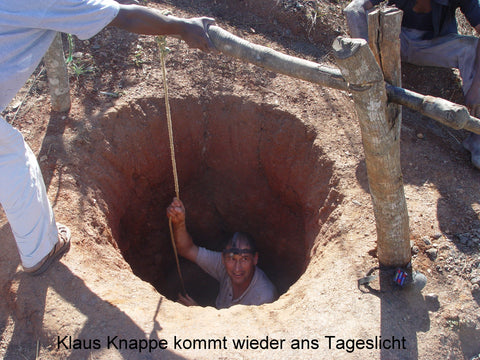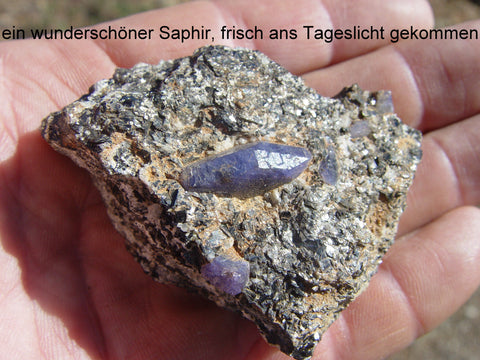Skip to content
Deep in the south of the Big Red Island, about 40 km north of the town of Ihosy, is the village of Zazafotsy (translated "white child") on Route Nationale No.7. From here we went on foot into the mountains. 
But first they had to negotiate with the owner of the deposit, Monsieur Etienne, first for the permit and then also to hire a guide, because this small mine could not be found alone. M.Etienne, who worked at the post office in Ihosy, was also happy to take time off and first of all showed us his treasures that were for sale. We knew 
yes, there will be very little to be found at the actual site, so we negotiated for a few hours before acquiring a decent suite of good sapphire specimens. Numerous good single crystals were also on offer. Even in M.Eitienne's stock, it quickly became apparent that the sapphires occurred in a biotite gneiss, often associated with almandine, although the garnet did not crystallize, but rather in thick slugs. Also worth mentioning was albite, which was very common as an aureole around sapphires. And not so rarely we also found mixed crystals of sapphire - ruby, some of which looked very attractive. We found out why later at the mine itself. We were also able to identify other minerals on the small heap around the shaft. 
After M.Etienne made his deal with us, he agreed to give us his son as a guide to the mine.
A few kilometers outside of Zazafotsy we left the asphalt road and started to climb the mountains. The path first led over a very wide "road" trodden by Zebus, until this finally turned into a narrow path that led us leisurely uphill. We had to walk for a few hours, the terrain was now hilly, treeless, but overgrown with tall grass. A small stream with a natural "pool" brought pleasant refreshment in the hot sun and was liked 
assumed.
After a few hours we reached the small mine, now we had mastered a height difference of 350 m. It is called "mine Bevoaroy". Formerly as a small open pit, today it is only underground 
reduced. The photo of the old quarry shows very nicely the corundum bed with a thickness of 80-100 cm, concordant in the paragneiss. Numerous old shafts show that these shafts were sunk down to the corundum layer and then " foxhole mining " was used. This was confirmed by an inspection of the only shaft in operation. 
On the small heap that surrounds the shaft, we were able to find not only very bad corundum but also some good black spinel crystals, which are probably of no interest to the people here. Small (a few mm in size) lemon-yellow sillimanite crystals occur relatively frequently in biotite gneiss. 
Underground we were able to determine that rubies can be found in the footwall of the interesting stratum, while sapphires can be found in the overhang. the transitions can then be found in the center. It is also interesting that even the blue corundum fluoresces very beautifully dark red under UV light, ie they still have a certain content of chromium trioxide (pure sapphire does not fluoresce). There were 6 men working the mine as needed. Payment is in minerals, 50% goes to the owner, 
the other half is shared between the boss of the workers and the workers themselves.
Back in M. Etienne's house, at the end of our visit, we were able to choose some very beautiful single crystals, which only too easily come loose when formatting the steps. 
A few years later, on another visit, the shaft we were in had collapsed and work seemed to have stalled.
Monsieur Etienne died in 2016, and by 2017 his heirs had not yet managed to properly operate the small mine (which was already described by LACROIX in: La minéralogie de Madagascar at the beginning of the 20th century). We hope to hear good news on our next visit in July 2018.








